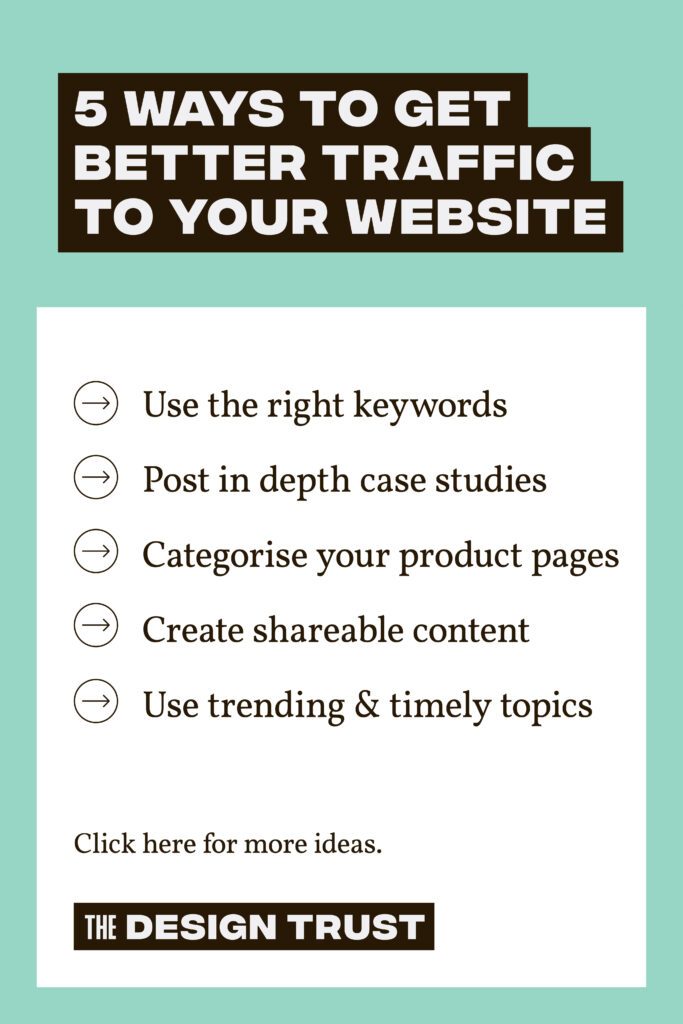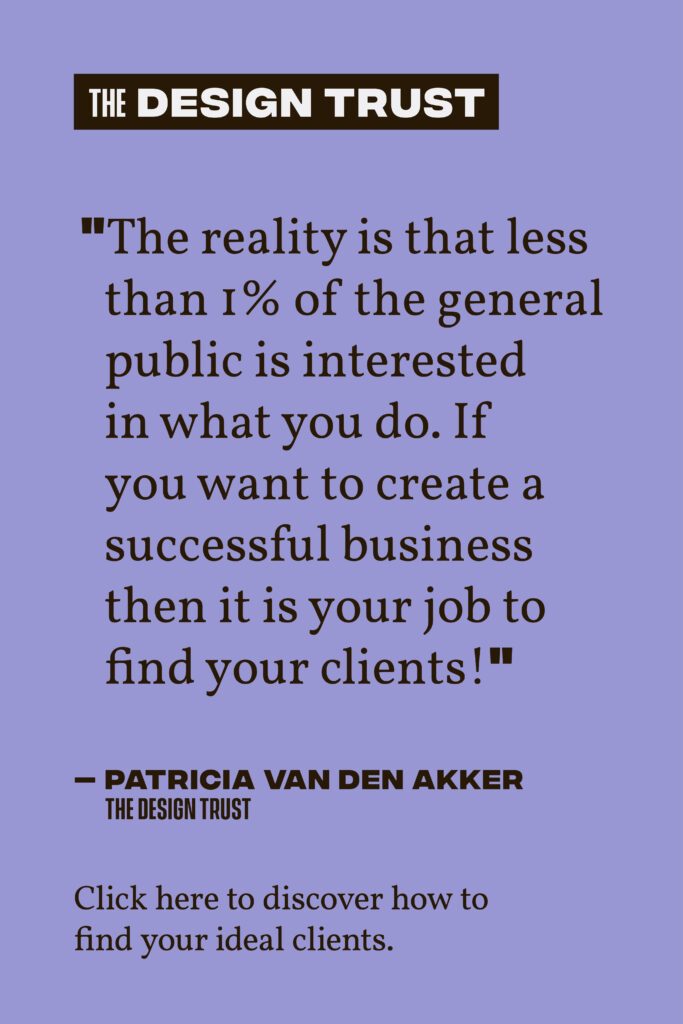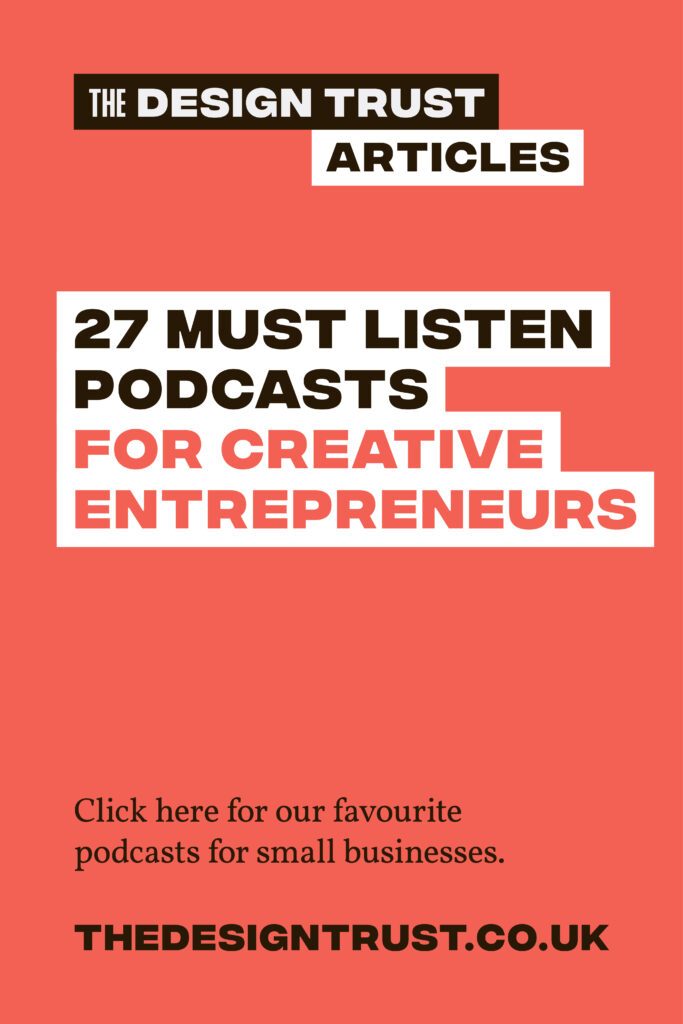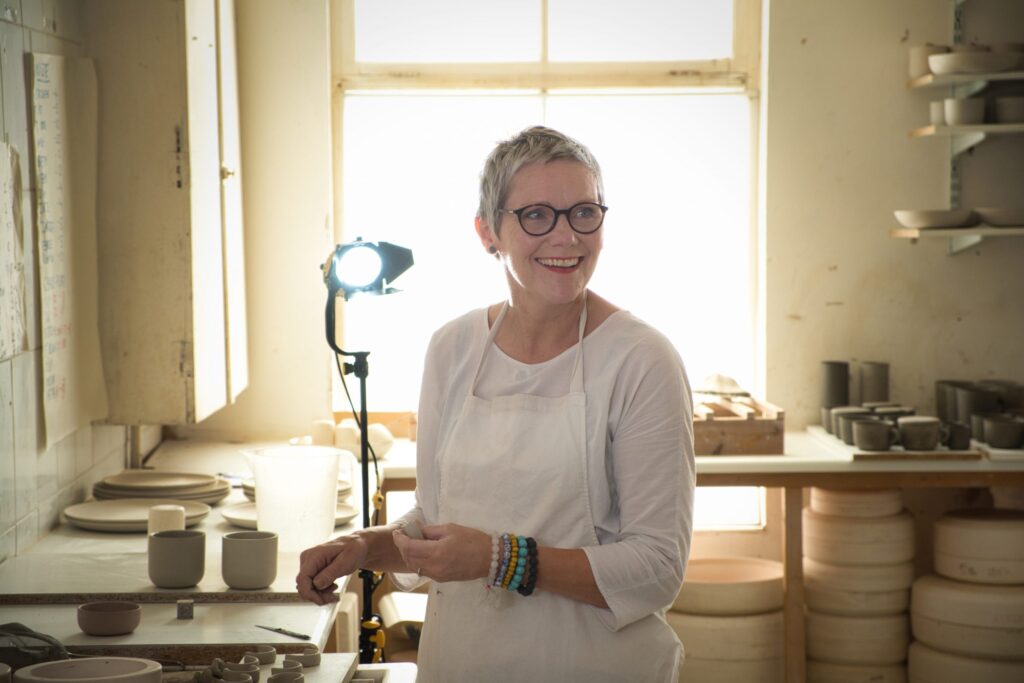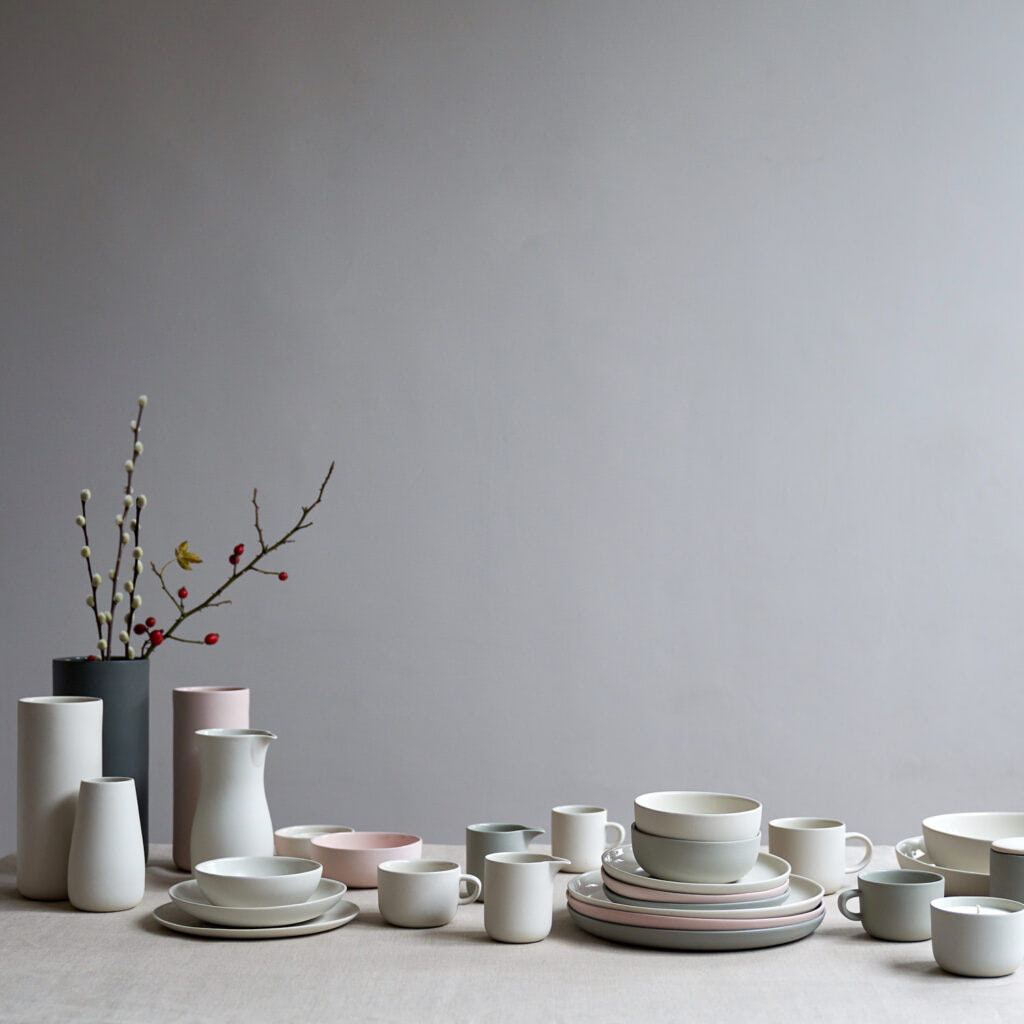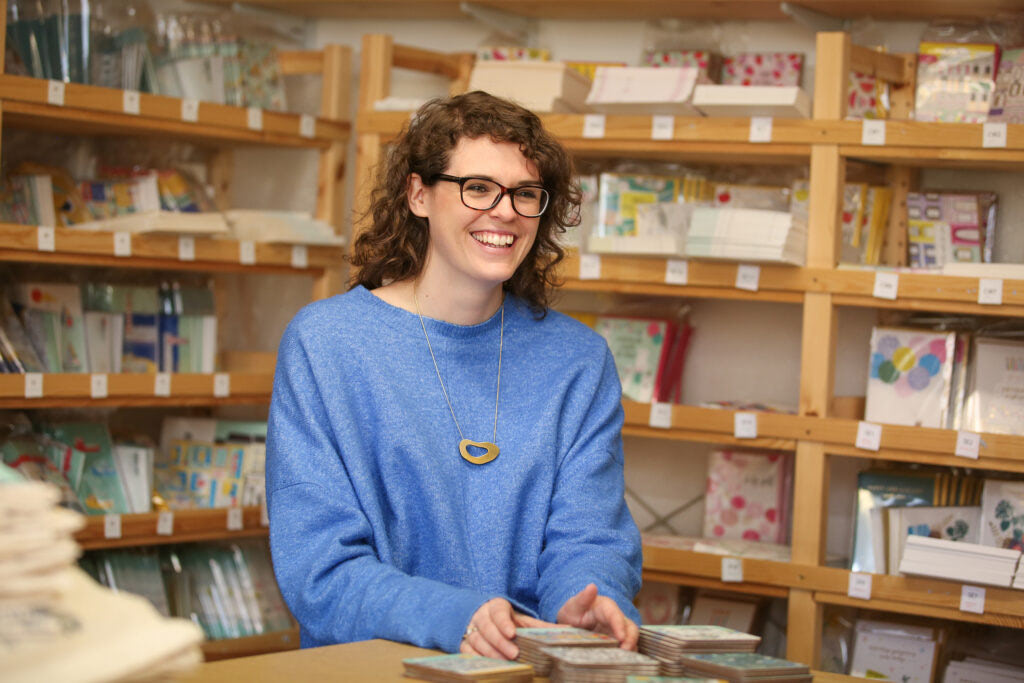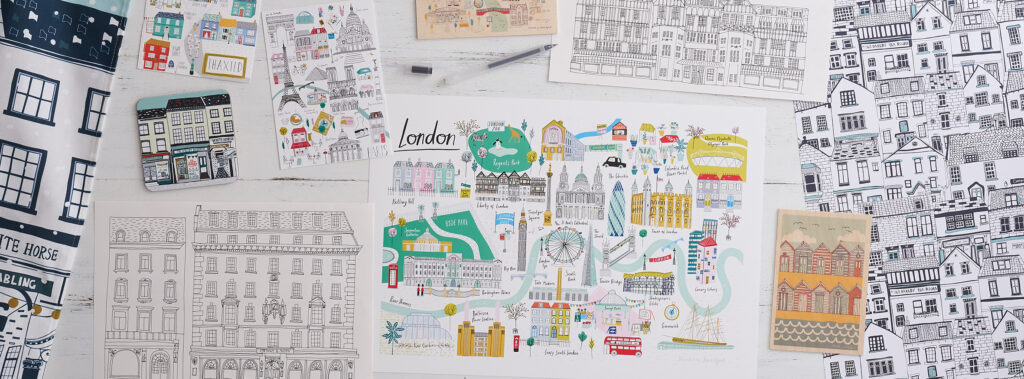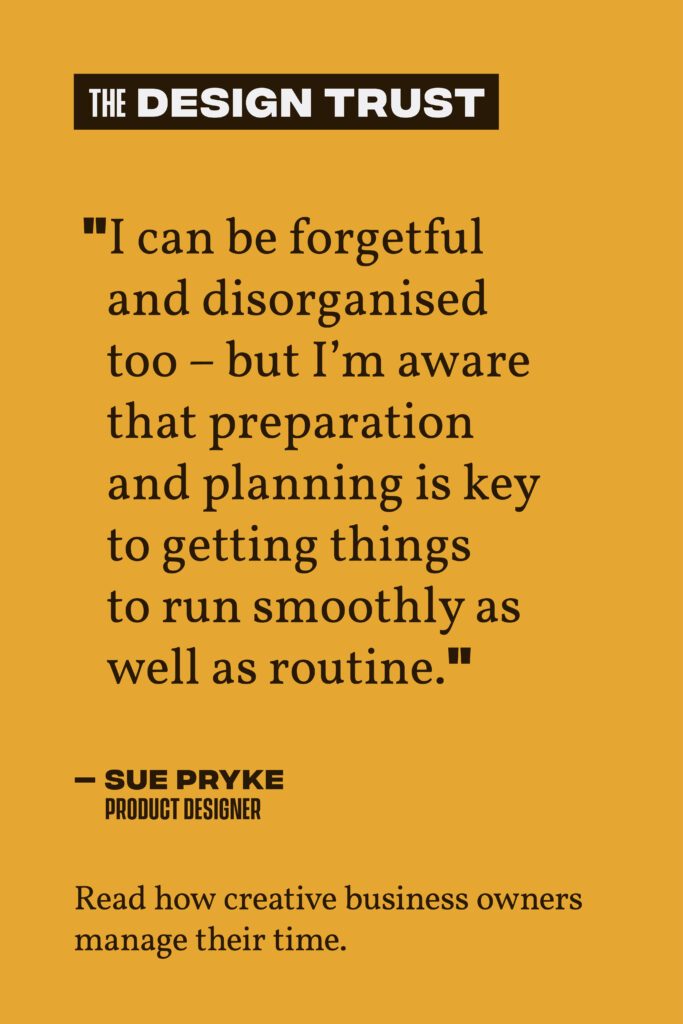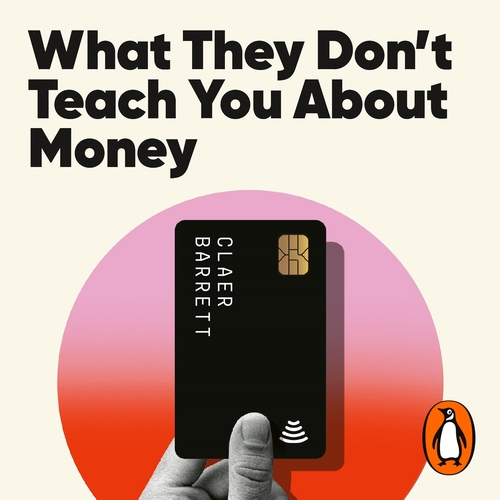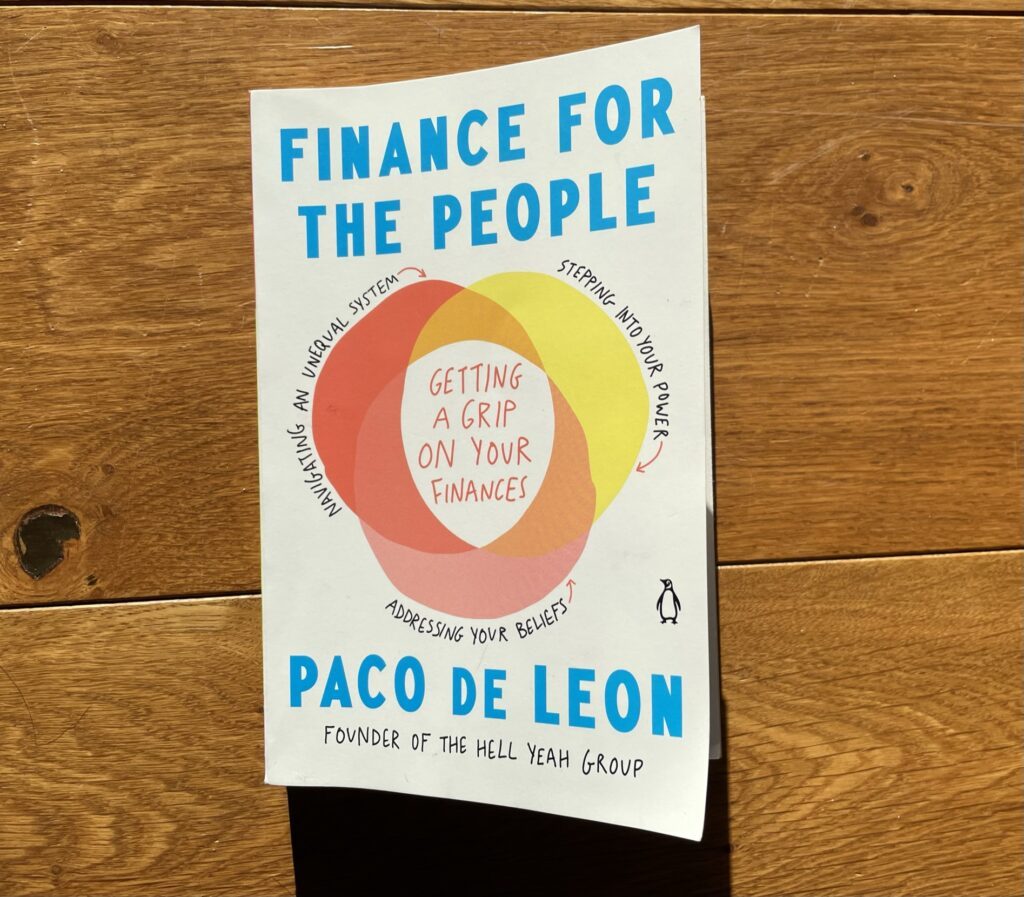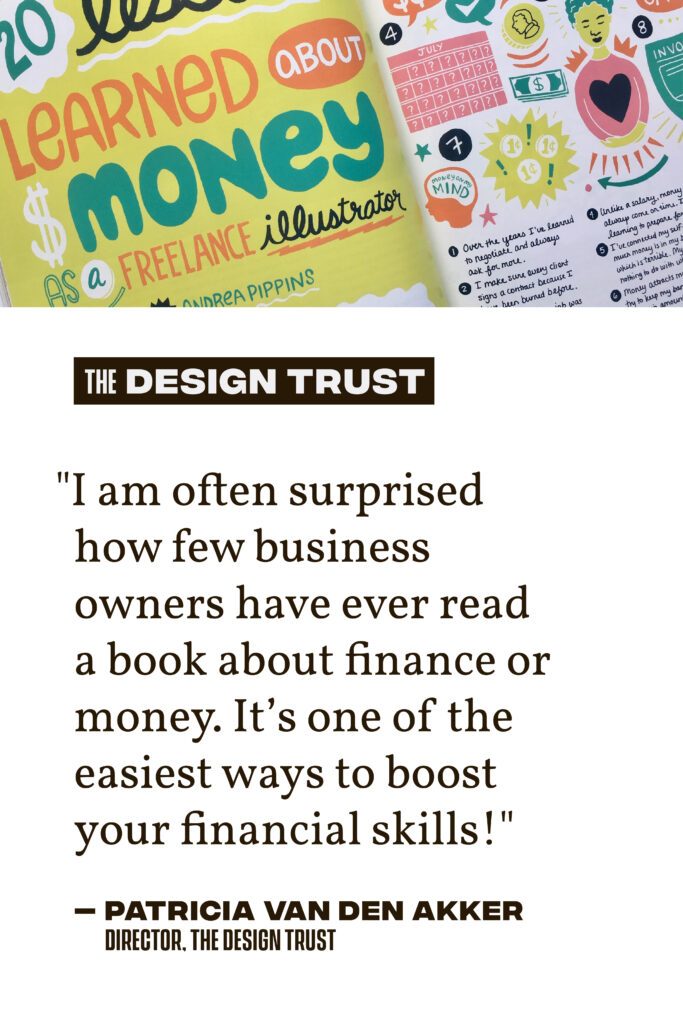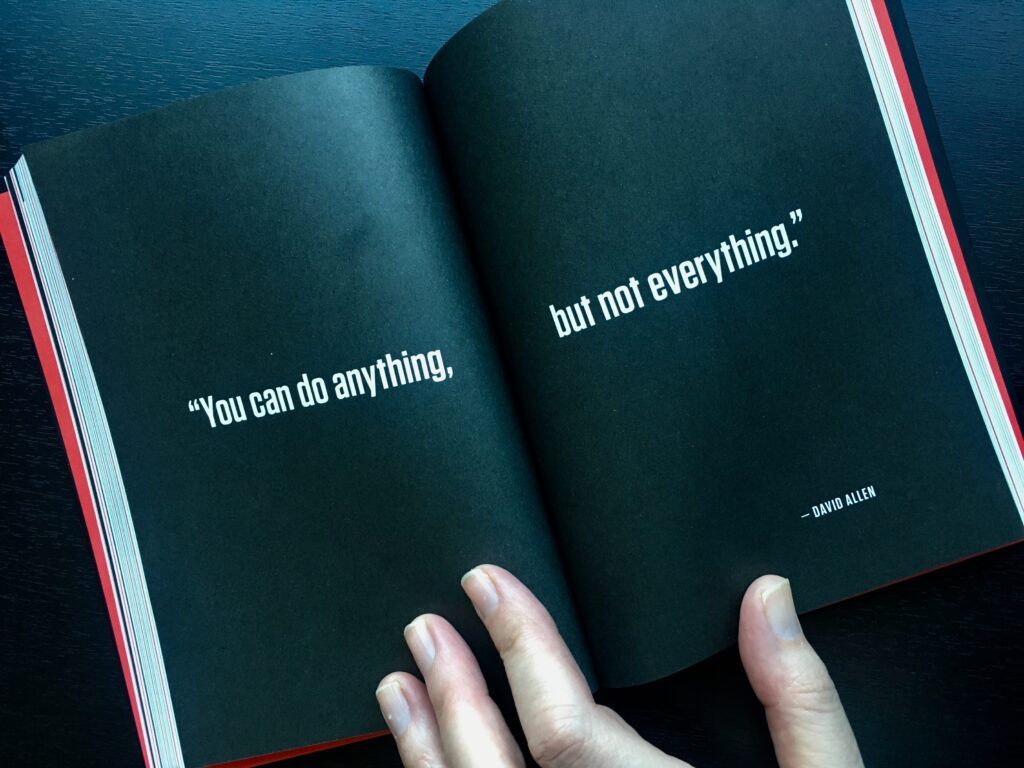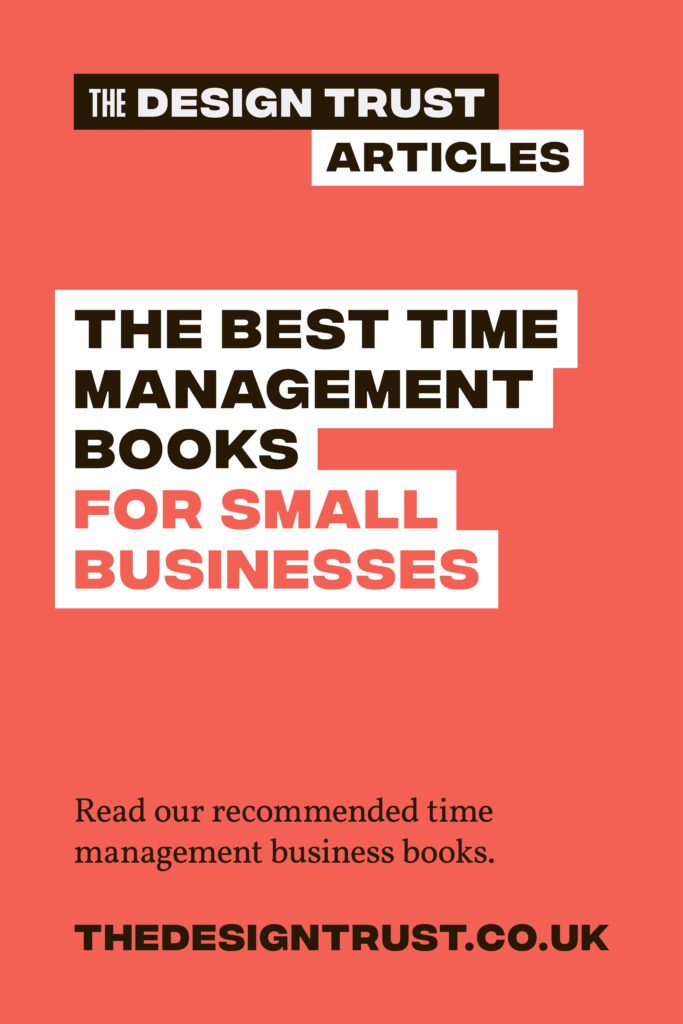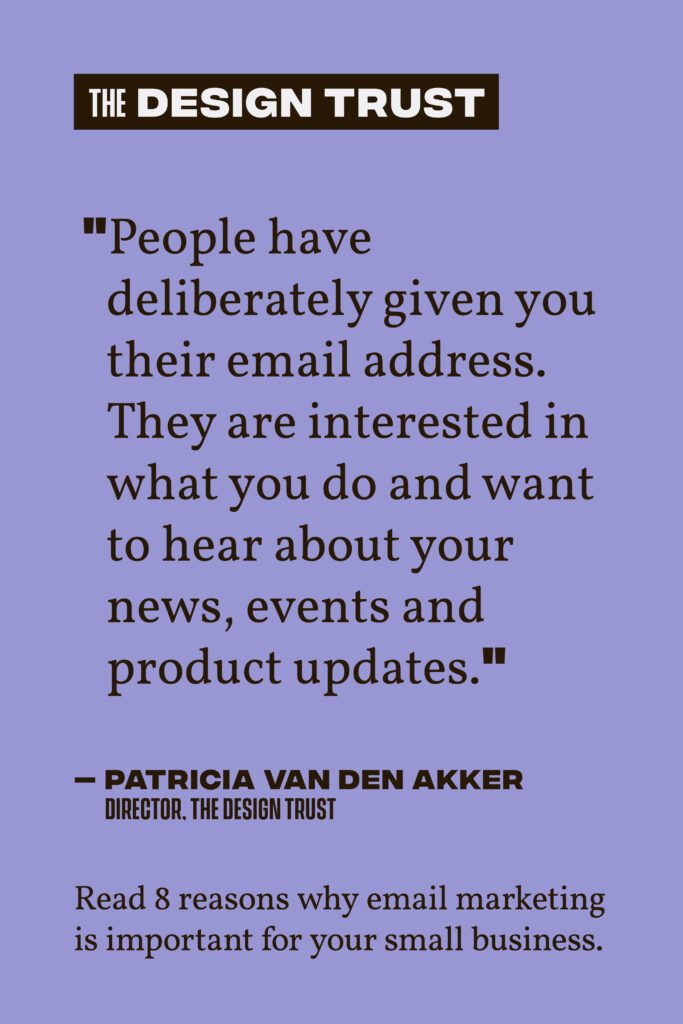Dear Design Doctor
I am a ceramicist and sell through a lot of galleries. Frankly I can’t keep up with demand, and my work is very labour intensive. I have been gradually increasing my prices and have worked out what I ‘should’ charge – around £40 for a mug, but I actually charge £20 – £22 (retail price).
This means I get less than the minimum wage – I simply want to make more money as a creative. I don’t expect to make a lot as a potter, but I would love to earn a bit more than this!
The answer to this real-life question is provided by Patricia van den Akker, Director of The Design Trust:

‘Thanks so much for your question, and great to hear you are selling well, but as you probably had already worked out yourself: you can’t continue like this! You might be busy, but this is not a sustainable business – neither financially nor emotionally.
So, what can you do?
There are plenty of options for you to make more money as a creative. Do you have the guts to make some (big) strategic decisions for yourself? Here are some big questions I would be asking you as a coach or adviser:
Question 1: Are you procrastinating? Could you be quicker?
Firstly: Have you calculated your cost price correctly? Although you mention your price above, I am not sure if you are actually covering ALL of your costs. Click here to find out how to calculate your cost price correctly.
You might think that you are expensive, but it is very common for makers to miscalculate and charge too little for their products, and barely cover all their costs.
Or creatives say that they are profitable, but actually still pay themselves too little! It’s not just your materials that you need to cover, but also your overheads such as your studio space and marketing, and in particular your labour and time.
Calculating your cost price is a crucial first step if you want to make a better living as a creative.
The next step is to check if your production methods can become more efficient. Have a critical look at your creative – and making processes and evaluate if you can decrease the time spend on each task.
- Can you group certain tasks together and become more efficient and effective by producing them in batches?
- Are some production methods really labour-intensive but would your clients really see the difference? And more importantly: would they be prepared to pay extra?
- Can you work with an assistant, outsource or delegate tasks to somebody who charges less than you (might be tricky below the minimum wage!)
- Are you spending a lot of time to get your ceramics ‘perfect’? Are you overworking your work without anybody really seeing the difference? Are you actually not that busy and therefore spending more time on your products then is actually necessary? (Answer that one honestly!)
- Do you really love what you do but not really see yourself as a business? Have you still got a bit of a hobby-mindset going on? It’s very common when you are starting out to be slower, and therefore the prices you need to charge are relatively higher against a more experienced maker.
- Could you make more products per hour? Or simplify the designs so you can ?make more?
Although you might not get your cost price down that much, these efficiency savings will help to make more money as a creative. Especially as any gallery commission will double or triple your retail price any savings on your cost price can have a big impact.
GET INTO ACTION:
Become more aware of how you are spending your time. Keep accurate time sheets for a few weeks. And start to keep a time sheet for every project or commission you do. You might be surprised how much time they take, which might make you more realistic when you are putting proposals together in the future! What’s also interesting is that when you start keeping time sheets like this, then you start to procrastinate less nearly automatically!
Start to be more honest with yourself about how you spend your time: Is your perfectionism getting in the way? Are you faffing, procrastinating and taking too much time? Could you get more efficient? Are you taking yourself and your business seriously enough?
Find out the facts about your cost price too so that all your costs are covered. Knowing the facts often encourages makers to finally charge appropriate prices!
Question 2: Why compete with the High Street’s mass-manufactured goods?
Because that’s what you seem to be doing! And that’s a battle you will always lose. Sorry.
Your price expectations seem to be very low to me, as you are comparing your products with price levels for mass-produced products!
The reality is that your uniquely made products are very different and you can’t compete with a machine!
You and your potential clients (stockists included!) need to see that a handmade mug is different from a mass-produced mug, and that the perceived value of both should be very different. If you don’t present your work more uniquely to the outside world then you will never get that higher price you need (and what it is worth!) and make a better living as a creative.
See here the story of the £12,000 table and that you too are selling much more than just a product.
I see this issue of competing with the High Street and mass-produced items often with crafts, in particular with functional giftware and interior products, such as ceramic mugs and plates, handmade cards, printed cushions and wooden salad bowls:
- There is much more pressure on the prices of functional products as the consumer has a psychological price that they will pay for such items. Clients have often an idea of what they would pay for a wedding gift for example or what a mug ‘should’ be worth. In comparison: the price of a piece of art is often harder to guess than a functional item.
- There is a lot of competition from far cheaper mass manufacturers importing from cheap-labour countries for functional items. Again this brings perceived value and the price down.
- And an extra problem with functional ceramics is that consumers like to buy them in series: 4 of the same mugs, 6 dinner plates. That puts even more pressure on keeping the single unit price low.
In my opinion it will be very hard for you to compete in this product area. It will be an ongoing battle (that you are likely to lose). And I doubt you will ever be so efficient that you can sell to galleries at £10 with a profit (unless you are planning to become a robot!).
And I doubt that that’s the kind of creative business that you want to run?
GET INTO ACTION:
Stop creating work in a very competitive market (where you won’t be able to win on price) and start being more creative with the products you make and how you present yourself if you want to make a better living as a creative:
- How can you make more unique products that have a lot less competition?
- How can you create work with a higher perceived value and therefore you can charge more for? Can you increase the size, change materials or make it more decorative or illustrative?
- Present your work in a better way, in better places? Improve your branding and photography?
- Make them more one-off and exclusive? Can you create a limited edition (individually numbered)? For even more ideas see question 3 below.
- How can you make work that is more ‘art’ than ‘design’ or ‘manufactured’? Because Art has a broader and more flexible price point than most functional creative products.
TOP TIP: My topsy-turvy pricing tip: Instead of calculating your cost price and then working out a wholesale price and retail price … instead start at the other end: What do you think your clients would be prepared to pay? What could be worth £50 or £95 or £250 in your business? And then work backwards to see if you can produce it for those price levels. Get creative with your price points and what you want to create!
Very often we see that actually increasing your price points or offering different price points can make your business more sustainable than focusing only on selling lower-cost items!
Question 3: Can you add value (without adding costs)?
There are plenty of ceramicists who sell mugs for £40 or more.
Very successfully!
So, what’s going on?
These £40 mugs might be classic vintage, have historic value, are elaborately decorated (think English beer steins!) or created by well-known potters.
How can you add value to your work without adding costs?
How can you make your ceramics worth more? More valuable to your potential clients? And make more money as a creative!
In my talks I regularly give this example about cushions:
I see many fairly similar, printed, small square cushions out there that cost £40 – £60 retail. To be honest that is pretty expensive for many customers, especially as fairly similar cushions can be bought on the High Street for far far less. Why copy what’s already out there in the mass market?
If a cushion designer would create a more unique cushion (e.g. a different shape, add applique, or increases the size dramatically) then these cushions would be worth more as there is less competition and more interest.
If a cushion designer would create a large floor cushion then the costs would only go up marginally, because although the material costs would be higher, the biggest cost of labour wouldn’t be much higher as a small or a large cushion take up a similar amount of time to make. But this larger cushion will be worth much more in the eyes of a consumer! It’s not a cushion, it’s a piece of furniture! And you can easily charge £100 – £120 for that!
So how can you add value to your ceramics?
- Can you add decoration, beautiful and more unique glazes or colours? Or really personalise your mugs?
- Can you create very specialist or unique mugs? Make them more local? Add illustrations or mark making?
- Can you play with the size, and make lovely big coffee mugs that fit snuggly in your hands? Or create a set of very collectable americano cups?
- Can you make your ceramics more ‘handmade’ or more ‘high end designer maker’? Deliberately making them more unique and exclusive, rather than machine-made? (Here we go again!)
- Can you move away from mugs and start to design larger ceramic pieces for which you can charge more? Think about more ‘art-like-non-functional’ items here such as vessels or wall pieces as art has often got a higher price value than functional items. (See question 2)
- Can you add ‘keep sake’ packaging to make it a really special gift (but keep the costs down!)?
- Can you increase your own profile as a ceramicist? Is your branding and photography in line with your profile? Have you won any awards or have you taken part in prestigious events? Can you share your story on your packaging?
GET INTO ACTION:
Become more aware what your products are worth in the eye of your potential clients.
What can add value to your work without adding costs?
Charging more is all about the perceived value, rather than the actual value.
Get more creative with the type of product you create and think about the perceived value for your type of products. How you can improve the branding and presentation.
And just a kind reminder … just because you are selling loads, that doesn’t mean that you are profitable! One of the easiest ways to increase your sales and profits is by stop selling unprofitable and products and start introducing higher end products. Go through your recent sales and identify which products are losing money, and then either increase their price or stop producing them and start replacing them with work that is sustainable and profitable.
Question 4: Are you underselling yourself?
What’s interesting is that you have done the calculation and the facts are stating very clearly that you are not charging enough. And still … you have decided to overrule these clear facts and charge less then you should! Hummmm.
So, what’s going on there?
Why are you not charging the right amount?
What is stopping you from charging the right amount?
Are you worried that nobody will buy from you?
Do you worry that you or your friends wouldn’t be able to afford your work?
Do you love what you do and therefore don’t see it as a ‘real business’?
Do you think that your work isn’t good enough yet?
Do you worry what others might think?
Two things to consider here:
- If you charge too little for your ceramics then ‘people in the know’ will think there is something wrong with it. They won’t think ‘oh what a bargain’. Do you really want to be known for being cheap?
- If you continue as you are at present you will get completely overworked and likely get a burnout. Is that worth it? Are you still enjoying your work or has it become a hamster wheel out of control?
And yes, you aren’t the only creative who undercharges and undervalues themselves. It’s very common! And I suspect that the vast majority of craft businesses should massively increase their prices. Especially women. Because we love what we do. Because we ‘don’t do it for the money’. Because we are worried about being too successful. Because ….
But unless you start taking yourself seriously then nobody will!
GET INTO ACTION:
How can you work on your confidence? Your own emotions and behaviour around money, selling and marketing (often ‘learned’ at a very early age!) can have a huge impact on how you run your creative business and your ability to make more money as a creative.
I very often recommend this book by journalist Barbara Stanny on ‘Overcoming Underearning’ to help specifically with tackling money mindset issues. Or this book by creative coach and poet Mark McGuinnes on Motivations can help too, in particular the chapter about money versus creativity.
Unless YOU start to work on your confidence, and charge and communicate what you, your skills and products are really worth, through regular communication and presenting yourself appropriately, you will continue to be a poor artist in everybody’s eyes (especially in your own eyes).Unless you work on your mindset around money and your confidence then nothing will change.
I can give you all the advice in the world around increasing your prices, or changing your business model but unless you realise that YOU need to take charge of your business you will continue to make a loss.
Which direction do you want to take? Make a living or continue to be poor and very busy?
Question 5: Are you showing in the right places?
Getting the right price for your work is directly related to WHERE and HOW you position yourself.
Pricing is relative. What is expensive in one place, might not be expensive in another location.
Are the galleries you are with selling other high quality, more expensive crafts? If your £20 mugs sit next to a £95 cake stand or £150 collectable tea pot then your mugs won’t look out of place at all! But if you are selling online or at an amateur craft market then your mugs will be very expensive indeed.
You say you are selling with a lot of craft galleries. I suggest you assess your current stockists critically, and find some new higher end stockists that sell higher end products and attract clients that understand the value (and therefore the price) of your work.
I assume that you are selling maybe locally or that you might be selling to ‘tourism shops’ where price levels are often lower.
Rethink where you want to sell, if you want to make a better living as a creative.
Good professional galleries, collectors and regular buyers of good quality crafts know the value of high quality handmade products, the training and skills required. They will know their clients well and can advise you on what sells and what doesn’t, and what you can charge.
Many creatives worry about the affordability of their work, and lower their prices very quickly if they don’t sell. But the reality is that the price level isn’t as important for the purchase as you might think. Lowering your prices doesn’t necessarily get you more sales. What you need to focus on is doing more marketing to the right clients.
GET INTO ACTION:
Are you showing in the right places? Identify a list of at least 15 shops, galleries and events where you would like to show and sell your work. Make a list of the ceramicists who are selling there right now, the kind of work they sell, and their price level. Do some research into the places that appreciate your skills, and approach them professionally to start selling in the right places for you and your work.
Or look at who your role models are, the ones that are able to charge what you would like to charge. What are they doing differently?
Get inspired (don’t steal!) how they present themselves online and at events. What can you learn from others and how they make more money as creatives?
Question 6: Do you need a middleman at all?
Or what about not selling through galleries or shops all together?
Galleries have to charge commission, and therefore make your retail price high! (for more info about why galleries charge so much commission, click here.)
Especially at the beginning of a maker’s career the added commission doesn’t work in your favour: you are still relatively slow and learning and therefore it takes you longer; you are not well known enough and therefore can’t charge a premium (yet); and adding the commission of the galleries or retailers will make your retail price simply too expensive.
The reality is: many new makers can’t afford to sell wholesale.
But: You don’t have to sell wholesale!
You could have a very profitable business and make a better living as a creative by just selling direct to consumers, via craft markets, online with your own web shop and getting commissions.
You will need to do more marketing and selling yourself than you probably do now, but your profit margins can increase and you will have direct contact with your clients, which can lead to higher value commissions and personalising your products.
Or … look at other trade buyers too …
Option 7: Different trade, different price.
If you want to make series of tableware but your prices don’t stack up for selling wholesale, then see if you can sell through other trade businesses such as interior designers or create hotelware. They buy in larger quantities like retailers, but they pay more than retailers (normally they get a 30% discount on the retail price).
Many small restaurants, organic coffee places, and boutique hotels love to have a more unique tableware range to present their food and drinks. And they are prepared to pay for it!
And there is a creative and commercial opportunity for you in this too: The shapes and colours in hotelware are much more adventurous than plain white plates that are most common in consumer tableware.
GET INTO ACTION:
Can you sell in bulk, to others than retailers? Get curious and see what other creatives are doing.
You can approach high end restaurants and hotels directly (do your research of who is interested in design and presentation), but there are also specialist agents in this field.
Or find the interior designers or branding consultants who specialise in working with these kind of boutique hotels. Tableware decisions are often part of interior or branding decisions when a restaurant is (re-)launched. Find out who works in this field and then pitch directly to them.
Option 8: Create a higher value collection
As I said at the start: Functional ceramics have a very clear price point in consumer’s and wholesaler’s eyes.
You can’t change that.
But what about getting more creative with the kind of products you make?
What about products that are less functional?
More collectible?
Larger in scale?
Work that is worth (much!) more in your client’s eyes?
I am not trying to turn you here into a ceramic sculptor or artist, but think about larger ceramic vessels, lidded pots, vases and bowls.
These have a functional purpose, but are also decorative, and therefore worth more.
In the last few years the TV programme The British Bake Off has sparked big trends and sales in bakeware products. I wouldn’t recommend to you to create ramekins (too functional again!) but do think about the presentation of cupcakes and tarts.
Could you make beautiful platters, a footed cake or even a tiered cake stand? Something that’s really beautiful and a future family heirloom? These kinds of beautiful AND functional items are more unique (and less easy to produce by the mass market!) will sell!
What will you do?
I have given you 8 very different strategic questions and options to make a better living as a creative. It’s up to you now to decide which way is best for you and your practice and business.
But you do need to make a decision! You do need to change direction!
If you continue on your current path then you will make very little money. Or worse: you will soon lose your passion for making.
Get more creative not just with the products that you make … get creative with your business model & marketing.
Make your creative business work for YOU.’
Did you find this blog post useful? Did it get you thinking about your own business and pricing? How creative you can be to make a better living as a creative? Have you got other suggestions or do you feel similar like this ceramicist? Please add your comments in the comment box below.
